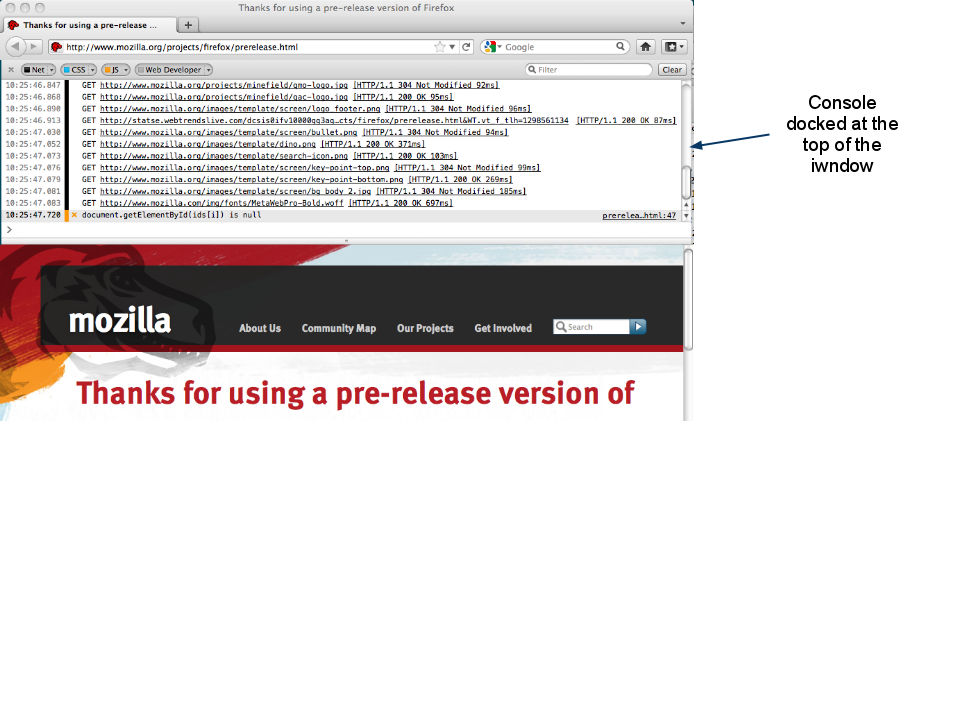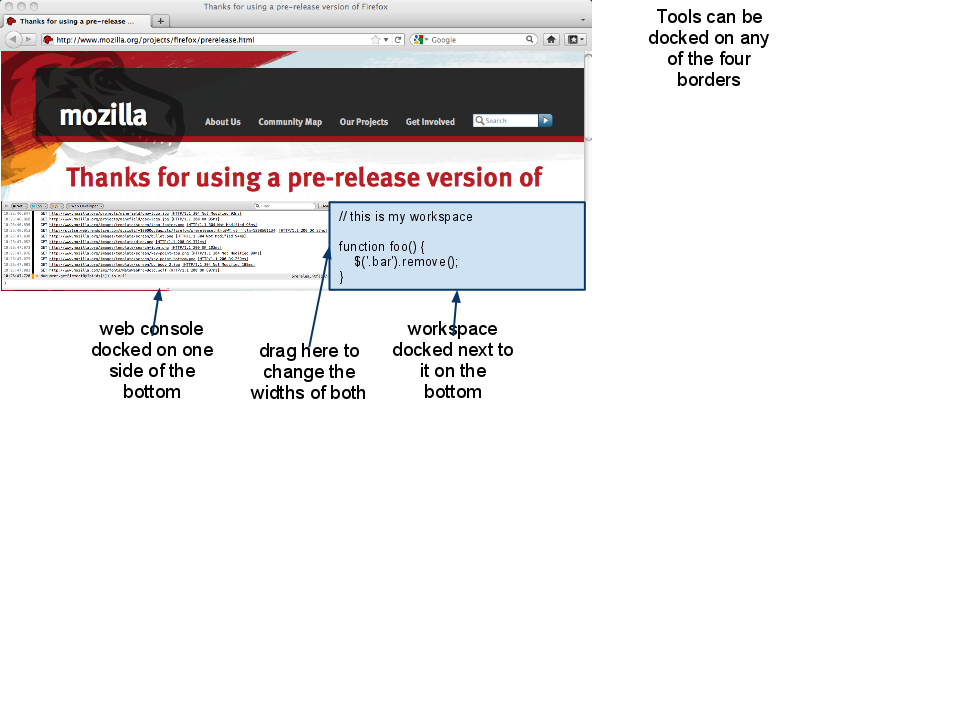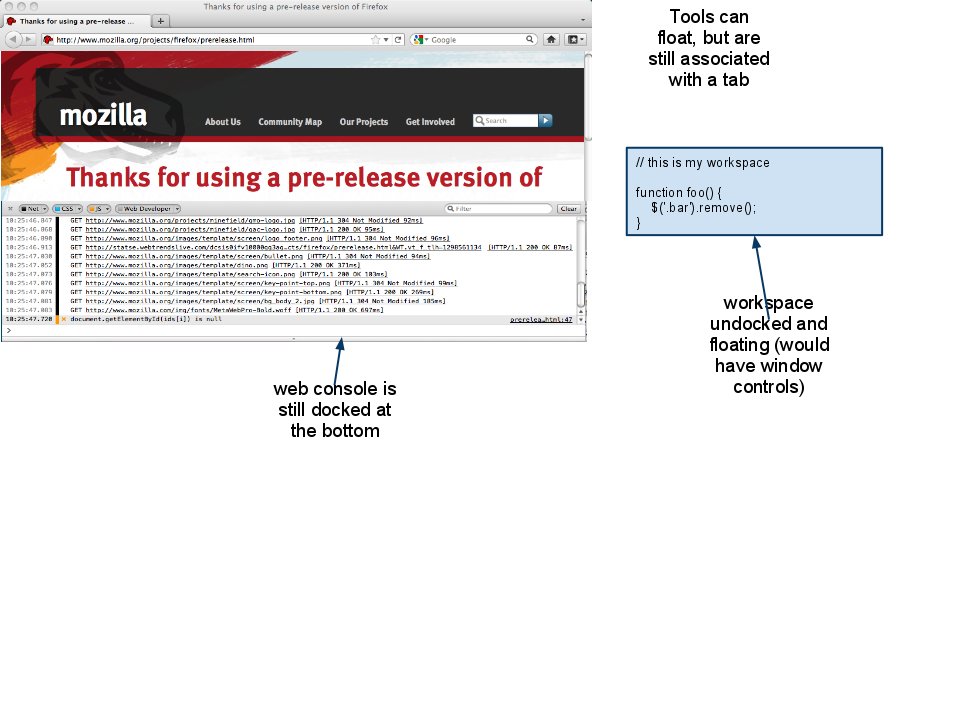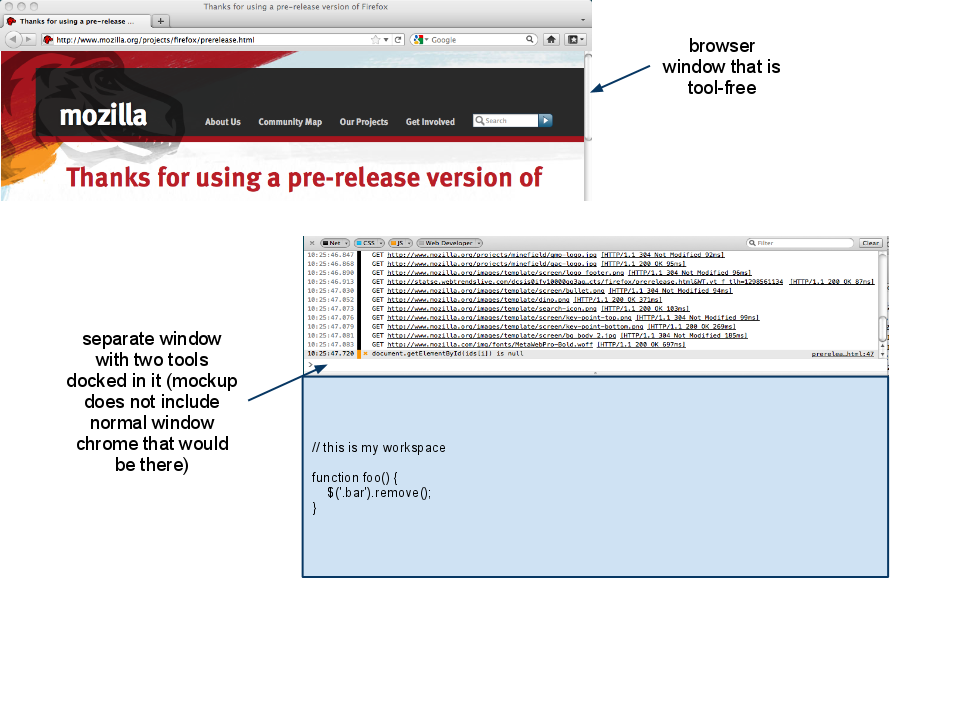DevTools/Features/OverallUI
Mozilla Developer Tools UI
Summary
This project is to implement the reusable and high-level user interface conventions that will appear throughout the developer tools.
Open Questions
- Panels need to be floatable and dockable
- what is the scope of panels and how does it change as you move between tabs?
- how can panels that are frequently used together be denoted as such?
- how do we handle "activation"? (Which sites the tools show up for automatically? which tools? how are they grouped? how do we keep expensive tools from slowing things down?)
Panels
- A blob of user interface that represents a specific tool
- Ideally, reusable in both Firebug and in the ways described below
- In our tools, they will be displayed in Jetpack Panel objects which wrap XUL Panel objects (albeit with new features that we need to add to them).
Docked Panels
Docked Panels, side-by-side
Floating Panels
Floating Tool Window
Scope
Each tool works in a particular "scope". For most users most of the time, the scope is simple and invisible: the tools are tied to the tab for which they were created. Tools can be given a new scope along the way (see below).
If the user switches tabs, any tool windows or floating panels will disappear (and any tools that were in use for the new tab will be displayed).
People who are working in browser chrome (signaled by a pref?) will have tools that are associated with chrome and do not change when the current tab changes.
A case that is under consideration (but should be considered out of project scope for the moment) is one like the current (as of Feb 24, 2011) Workspaces add-on. That add-on works in the scope of the current tab, so each time you evaluate an expression it is evaluated in a different scope. This is a less common use case and if we were to introduce it, we need to be careful about how that's surfaced in the UI.
Gauges
Another idea: add-ons could provide "gauges" which would generally be viewed together in a strip. Memory, CPU usage, network traffic, framerate. Anything that can be displayed in compact way.
Alert Mechanism
All installed tools should be able to alert the user, regardless of which tools are open. Note that this gets into the "activation problem" that Firebug has solved.
Alerts to consider:
- this page is now consuming more than X memory
- this page took more than Y time until document was ready
Activation
- console logging happens when console is closed
- all other tools are totally off
- user clicks (something) which turns on tools. That activates more logging, alerts and whatever gauges would be visible.
- expensive operations (debugging, profiling, memory snapshots) are all turned on via independent switches.



